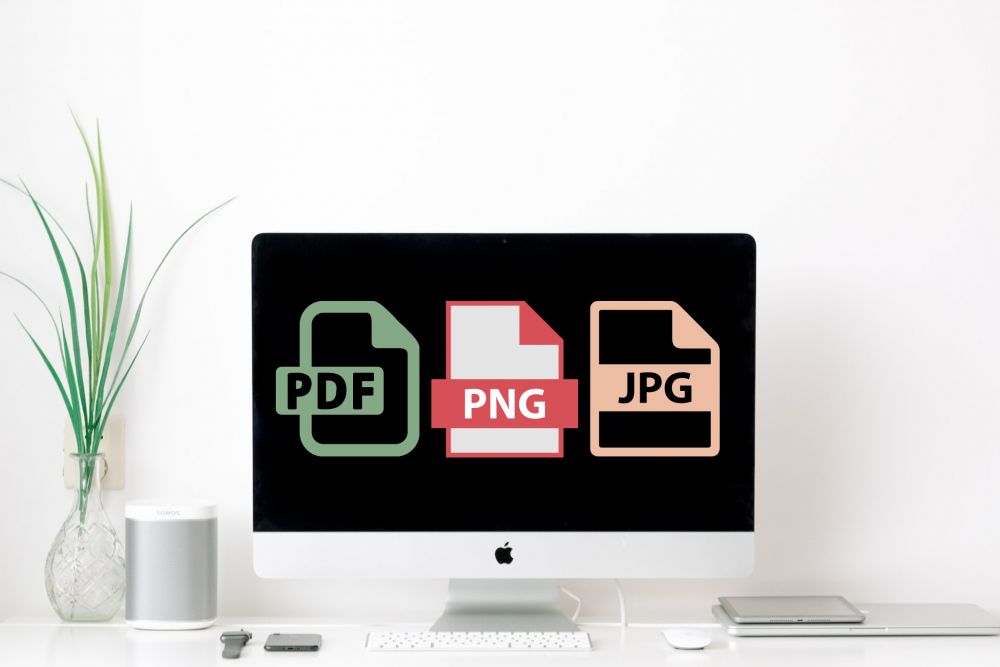How to Open a PNG File
Opening a PNG file is quite straightforward since most modern software and operating systems support PNG natively. You can use:
1. Operating Systems’ Native Viewers: Windows Photo Viewer (Windows) and Preview (Mac).
2. Web Browsers: Chrome, Firefox, Safari, and Edge.
3. Graphic Design Software: Adobe Photoshop, Lightroom, Skylum, GIMP, and CorelDRAW and others.
4. Mobile Devices: Almost all smartphones and tablets can open and view PNG files without requiring any additional software.
How to Convert a PNG File
Converting a PNG file can be done using various tools:
1. Online Converters: Websites like Online-Convert, Zamzar, and Convertio.
2. Software: Programs like Adobe Photoshop, GIMP, and IrfanView allow conversion from and to PNG.
3. Mobile Apps: There are various mobile apps available for both Android and iOS that can handle PNG conversions.
4. Preview Pane in the Finder on Mac: In the Preview Pane of Mac operating systems, users can export images in different file formats, including PNG

The History of the PNG File
PNG was created in the mid-1990s as an improved replacement for GIF due to legal issues with the GIF compression method. A group of developers, wanting to improve on and replace the GIF format, collaborated and brought PNG to life in 1996. The main goal was to produce an image format that was an open standard and didn’t have the licensing issues GIF faced.
The Benefits of PNGs
1. Lossless Compression: PNG offers lossless compression, meaning the image quality remains intact, even after compression.
2. Transparency Support: PNG supports alpha transparency, allowing for smoother transparency and shadows.
3. Variable Color Depth: PNGs can handle up to 48-bit truecolor or 16-bit grayscale, ensuring excellent image quality.
4. Gamma Correction: PNG allows for gamma correction to adjust the brightness according to the display device.
The Downsides to PNGs
1. File Size: PNGs typically have a larger file size compared to lossy formats like JPG.
2. No Animation Support: Unlike GIF, PNG does not support animation.
3. Not Ideal for All Photographs: For images with a wide range of colors and details like photographs, JPG might be more space-efficient.
The Difference Between PNGs, GIFs, JPGs, and TIFFs
1. PNG: Lossless compression, supports transparency, typically used for web graphics, logos, and icons.
2. GIF: Limited to 256 colors, supports simple animations, and used predominantly for web animations.
3. JPG (JPEG): Uses lossy compression, no transparency support, best suited for photographs due to its ability to retain color and detail in smaller file sizes.
4. TIFF: Lossless format, used for professional photography and printing, supports layers and is often used when editing to prevent quality degradation.
In conclusion, the PNG file format is a versatile and widely used image format that offers a plethora of benefits, especially for graphic designers and web developers. Its ability to retain quality and support transparency are unmatched. However, choosing the right format depends on the intended use and the specific requirements of the task at hand.
Related Articles to PNG Definition

PDF vs PNG vs JPEG: When to Use Each File Format

Stellar Photo Recovery Software Review – Some Peace Of Mind In A Stressful Situation

How To Upload Images To Facebook At Higher Quality With Less Banding & Artifacts

FLIF | New Benchmark In ‘Lossless’ Compressed Formats & Image Format Cheat Sheet

JPG vs BPG? Another Challenger To The Ubiquitous JPEG Looks Promising









